#nubian mythology
Explore tagged Tumblr posts
Text

Worldbuilding: The Sa’Hahir (السحاحير)

A/n: I saw a picture of a grey monster, it resembled a female one, and oddly enough. I literally said to myself this is the perfect look for the Sa’Hahir. I don’t know who is the owner of the pic. It doesn’t belong to me but I found it on Pinterest.
Divider by @firefly-graphics ✨

As a big fan of Monster mythology; I deeply enjoy any monster mythologies of each country, and culture of the world. It is just my cuppa of tea ✨.
Anyway, in this post; I’m focusing on one of my favourite monster mythologies from: Sudan. In summary, It talks about a Nubian village named ‘Nawa’ in the northern state on the eastern bank of the Nile river.
The locals interacted many times with humanoid beings: The Sa’Hahir, but sometimes they showed unhuman features: like a long tail similar to a kangaroo’s. They feast on humans, and they show a big distaste for milk or diary products.
In all honesty, I don’t know why they dislike milk or diary products, but please if any Sudanese man or woman may read my post; tell me if you know why. Otherwise, I’d put my own reasoning and my own twist to the story, because: Worldbulding duh 😒
Anyway. Turns out, the Sa’Hahir are cannibalistic beings; resembling huge-ass grey-skinned Reptilian creatures (my Hc). They solely live on human flesh. And for some reason, They like to burn places? (I read a few articles about the Sa’Hahir; They like to burn places)
So yeah, they like to burn places of their would-be victims. They’d always interact with locals; disguising as humans, venders, and peddlers.
My Hc, the reasoning for their distaste for milk or dairy products, Because it is easily would reveal them; by affecting their shapeshifting skills; they’d flicker, and glitch between their human disguise and their true Reptilian selves.
What do they look like? In all honesty, the Sudanese folklore wasn’t specific in their descriptions of the Sa’Hahir. So my HC for then goes like this:
Standing at 7 feet tall, grey-skinned reptilians with rippling muscles and sharp claws, mouths filled with razor-sharp teeth that could easily rip through flesh and muscles. A thick eyelids specialised for protection in the sunlight, and seeing in the darkness of the night. They have high hearing, and can easily detect and identify the sounds of humans and animals alike.
And yes, They literally resembled some monsters in sci-fi movies if that helps. That is all for today’s worldbuilding session ☺️.
#writing#my writing#fiction#worldbuilding#headcanons#creative writing#beasts#monsters#mythology and folklore#mythologies#sudan#Sudanese mythology#nubian mythology#nubian#on writing#writing community#writers of tumblr#my ideas#mythical creatures#mythical#creatures#grey#writers life#daily dose of writing#daily writing#ideas#mythical beasts#mythical monsters#mythical society#mythical beings
20 notes
·
View notes
Text

Apedemak
Altura: 140 metros
Longitud: 270 metros
Peso: 5,500 toneladas
Primer Avistamiento: Meroe [Tierra: Teratoverso]
Controles: Tierra Control [Zarpazo de derrumbe] Energia Control [Contraataque potente, rayos oculares] Fuego Control [Llamarada Incendiaria]
Guarida: Meroe [Tierra:Teratoverso] Piramides de Nefer-Ra [Avatarverso]
Aspecto: León extraño (La Guardia del León)
Aliados:
Humanos: Aang, Katara, Soka, Iroh, Zuko
Kaijus y otras bestias: Anguirus, Baragon, Mothra, Rodan, Godzilla
Enemigos:
Humanos: Ozai y Azula
Kaijus y otras bestias: King Ghidorah, Zilla Junior
#avatar aang#avatar: the last airbender#avatarverse#kaiju#tokusatsu#disney#the lion guard#strange lion#nubian mythology#apedemak
0 notes
Text

Age of Mythology Heroes in Action
Had enough time tonight to knock out another Age of Mythology fanart. From left to right, these heroes are the Norse Valkyrie Reginleif, the Nubian princess Amanra, the Greek warrior Ajax, and the Atlantean admiral Arkantos.
#age of mythology#age of mythology retold#fanart#mythology#african#nubian#black woman#dark skin#woman of color#bipoc#woc#norse#scandinavian#european#valkyrie#greek#atlantean#digital art#illustration#art
21 notes
·
View notes
Text

Artwork from the collection Nubian Queen.
#nft#nftart#nftcollection#nftcommunity#nftcollector#afrikan beauty#black beauty#ai artwork#ai image#ai girl#ai generated#ai#ai art#digitalart#artificial intelligence#nubian queen#nubianlifestyles#nubian goddess#science fiction#sci fi#scifi#scifiart#scifiedit#sci fi and fantasy#imagination#mythology and folklore#egypt#ancient egypt#egyptian#egyptology
33 notes
·
View notes
Text
the ancient greeks literally named the aethiopians after "burned face", made multiple sculptures and pottery of heads that are clearly black, but Andromeda still got portrayed as white even though everything points to her being black
#aethiopia is actually sudan/nubia/kush btw#not ethiopia#anthropology#whitewashing#tw racsim#andromeda#cassiopeia#constellations#greek mythology#classical mythology#ancient sudan#sudan#kush#kingdom of kush#nubia#nubian#nubian princess
2 notes
·
View notes
Text
Did you guys know Andromeda was most likely black? She came from a place cale Aethiopia,
Ancient Aethiopia, (Greek: Αἰθιοπία, romanized: Aithiopía; also known as Ethiopia) first appears as a geographical term in classical documents in reference to the upper Nile region of Sudan, areas south of the Sahara, and certain areas in Asia. Its earliest mention is in the works of Homer: twice in the Iliad,[1] and three times in the Odyssey.[2] The Greek historian Herodotus uses the appellation to refer to such parts of sub-Saharan Africa as were then known within the inhabitable world.
The Greek name Aithiopia (Αἰθιοπία, from Αἰθίοψ, Aithíops, 'an Ethiopian') is a compound derived of two Greek words: αἴθω, aíthō, 'I burn' + ὤψ, ṓps, 'face'. According to the Perseus Project, this designation properly translates in noun form as burnt-face and in adjectival form as red-brown.[4][5] As such, it was used as a vague term for darker skinned populations than the Greeks since the time of Homer.[i][6] The term was applied to such peoples within the range of observation of the ancient geographers, primarily in what was then Nubia (in ancient Sudan).
Nubia had many queens, princesses, kings, so Andromeda being a nubian princess is likely! There's debate on where exactly she is from, since myths are a difficult thing to track down, but when I searched about it Nubia is one of the options that make more sense.
Happy Black History Month! I just wanted to dump my Andromeda lore and spread some awareness that she was in fact, not greek at all, like many may think!

Perseus and Andromeda (Frederick Leighton, 1891)
#black history#black history month#black history matters#ancient sudan#sudan#nubia#nubian princess#nubian#kush#kingdom of kush#andromeda#cassiopeia#andromeda black#If anything's wrong warm me and I will edit it but I literally took this of wikipedia so warn their editors too then lmao#greek mythology#greek myth#ancient greek mythology#classical mythology#Cepheus#aethiopia#africa#north africa#north african#painting#mythology#myth#ancient greece#ancient world
141 notes
·
View notes
Photo

A Gallery of Ancient, Medieval, & Modern Warrior Women
The first female warrior attested to historically is Queen Ahhotep I of Egypt (l. c. 1570-1530 BCE) who put down a rebellion by the Hyksos when her son, Ahmose I, was campaigning against the Nubians. In literature, the first mention of women warriors comes from Homer's Iliad (8th century BCE), which references the Amazons.
Whether attested to by historical or literary documents, women warriors are nothing new. According to Greek mythology, Epipole of Carystus disguised herself as a man to fight in the Trojan War, and the Assyrian queen regent Sammu-Ramat (r. 811-806 BCE) is said to have led troops and is also believed to be the inspiration for the legendary warrior queen Semiramis. It is possible that Queen Hatshepsut of Egypt (r. 1479-1458 BCE) did the same long before Sammu-Ramat, but this has been challenged.
Recent criticism claiming that women warriors are somehow an invention of 21st-century revisionist historians is untenable as historical and literary works spanning thousands of years argue otherwise. The following image gallery presents a sample of ancient, medieval, and modern warrior women from around the world.
Continue reading...
68 notes
·
View notes
Text
Andromeda’s race/ethnicity and why it’s not inaccurate to interpret her as black/African
Now you’ve seen how I draw my babygirl as Afro Palestinian Egyptian so you know where I personally stand on the subject. However, my interpretation isn’t the only one, ancient authors, from mythographers to historians to poets to playwrights, have proposed various different locations for Andromeda’s homeland, often times contradicting each other, what I’m trying to do here is correct some misinformation as well as argue that even if Andromeda isn’t black/ethiopian, she still wouldn’t be considered white or ethnically European.
I would like to reiterate like I did with my Hephaestus/Aphrodite post that I’m not a mythology or history expert, I just read a lot. So do your own research and come up with your own conclusions.
Let’s go.
The etymology of “Aethiopia”
Aethiopia means "of burned face" which yes is pretty racist be modern standards but basically means that its inhabitants are dark skinned, so even if you go by sources that it isn’t in Africa, the inhabitants still wouldn’t be white or Greek.
Location of the Kingdom
You’d hear the statement that the Aethiopia in mythology is not the same as Ethiopia the modern country, which is true. You’d also hear that it’s a completely fictitious location, that’s only partially true, while Aethiopia existed mainly as a mythological location (mentioned as early as the Iliad) that didn’t stop ancient historians, mythographers and poets from placing it in real locations or calling pre-existing nations Aethiopia. It’s hard to pick which one is more “accurate” bc they all contradict each other, not only that, but these writers didn’t actually visit these locations and ancient ppl weren’t as well versed in geography as we are today so they’d be weirdly vague or confusing about these locations, I mean just look at an ancient map and you’d see what I mean.
So personally, I think you can go with any version you personally prefer, the options are quite limitless, she could be from the Arab peninsula, the Levant, North Africa, Persia, hell maybe even India if you are like Ovid.
Andromeda’s genealogy
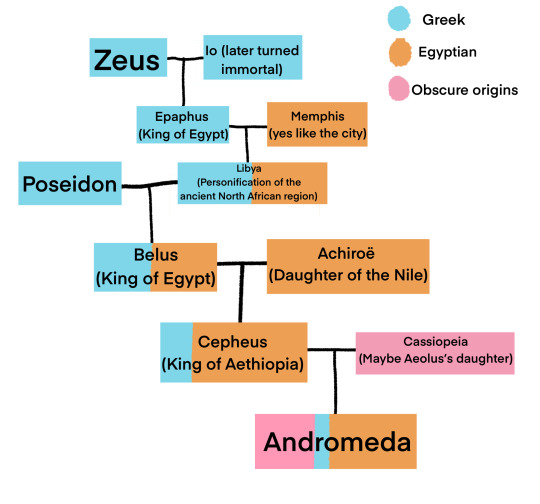
(I just realized that these are the Waterson kids color palette while writing this lmaooooooooo)
Yes Andromeda is descended from Zeus (no family tree can escape that man lol) and she’s also the great granddaughter of Poseidon, which adds a whole new layer to the fact he tried to kill her.
Now for a bit of history: The Trojan war (which didn’t happen irl obviously) was dated as taking place in the 12th or 13th century BCE by some ancient writers, that war happens a few generations after Perseus’s story, which means that Egypt was in the New Kingdom era, also called the Egyptian Empire, when Nubians (who would be considered black by today’s standards) were a very important part of society, even becoming Pharaohs. Ancient Egypt was a lot more diverse than modern ppl give it credit for, there were multiple ethnic groups living there. Not to mention that you can’t get more Egyptian than being descended from the god of the Nile River lol
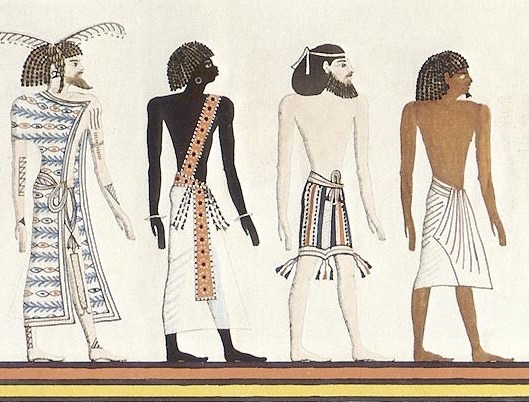
Libya is (obviously) the personification of the region of Libya, not the modern country Libya, but the general area in North Africa west of Egypt. The name Libya comes from the Libu, a berber tribe. So once again, even if Andromeda wasn’t black, even if you interpreted that her kingdom is placed in Asia, she’d still be of African decent.
Cassiopeia is a tricky one, her origins are obscure, she’s called a nymph by Nonnus, while Stephanus of Byzantium (a very late source) states she’s from Ioppa and that the city takes its name from her. However, Ioppa/Jaffa was identified as Andromeda’s home much earlier in Periplus attributed to Scylax, which was composed in the late fourth century bc.
Conclusion
You can make Andromeda black it’s ok. Ancient writers couldn’t agree on her country’s location but we can still speculate. Anyways ummm… I think that’s it? Maybe I’ll add to this if I find or remember more interesting information.
Have a great day.
#greek mythology#ancient greek mythology#greek pantheon#perseus#andromeda#princess andromeda#Persomeda#Ancient Greece#ancient egypt#Zeus#Poseidon#Cepheus#Cassiopeia#io#Belus#Ioppa#Jaffa#Aethiopia#new kingdom#Egyptian empire
72 notes
·
View notes
Text
Tales of Ethiopia as a mythical land at the farthest edges of the earth are recorded in some of the earliest Greek literature of the eighth century B.C., including the epic poems of Homer. Greek gods and heroes, like Menelaos, were believed to have visited this place on the fringes of the known world. However, long before Homer, the seafaring civilization of Bronze Age Crete, known today as Minoan, established trade connections with Egypt. The Minoans may have first come into contact with Africans at Thebes, during the periodic bearing of tribute to the pharaoh. In fact, paintings in the tomb of Rekhmire, dated to the fourteenth century B.C., depict African and Aegean peoples, most likely Nubians and Minoans. However, with the collapse of the Minoan and Mycenaean palaces at the end of the Late Bronze Age, trade connections with Egypt and the Near East were severed as Greece entered a period of impoverishment and limited contact.
All black Africans were known as Ethiopians to the ancient Greeks, as the fifth-century B.C. historian Herodotus tells us.
Ethiopians were featured in the tragic plays of Aeschylus, Sophokles, and Euripides; and preserved comic masks, as well as a number of vase paintings from this period, indicate that Ethiopians were also often cast in Greek comedies.
During the Hellenistic period (ca. 323–31 B.C.), the repertoire of African imagery in Greek art expanded greatly. While scenes related to Ethiopians in mythology became less common, many more types occurred that suggest they constituted a larger minority element in the population of the Hellenistic world than the preceding period (18.145.10)
18 notes
·
View notes
Text
Werewolf Fact #69 (dude!) - Ancient Egypt
Well, I thought this month would be about something else, but my patrons spoke differently! And I always listen to my patrons when it comes to folklore facts.
So, without further ado, let’s finally get back to werewolf facts! This is a big one, as it’s a lifelong favorite topic of mine!
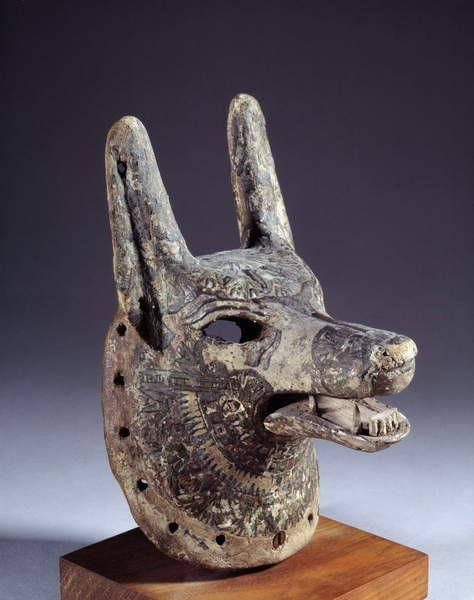
An ancient Egyptian mask worn by a priest during rites performed for the dead, who would have “taken on the aspect” of the wolf-headed god Anubis
Let me just open by saying that I absolutely love ancient Egypt. It’s fascinated me since I was a small child and I was reading a tiny children’s book about cats, and ancient Egypt was discussed. Naturally, when I found out about Anubis, I was even more interested. Then came games like Age of Mythology and many movies... especially The Mummy (1999), of course. Anyway!
Ancient Egypt didn’t have a negative opinion of wolves. In fact, several important deities had wolf heads and were associated with wolves. Let’s begin with something that’s always interested me, which is the city of Lykopolis (as it was called in Greek)...
More under the cut, since this post got so lengthy!
Lykopolis (ancient Egyptian transliteration is something like “Zawty”) was an important city located on the western bank of the Nile, capital of the Thirteenth Nome of Upper Egypt during about 3100 BC. The primary deities of the city were - as you might imagine - Anubis and Wepwawet, both wolf-headed gods. Mummified wolves (golden wolves, not jackals; more on this momentarily) have been found in various excavated chambers throughout the city ruins, of which very little still survives.
The city has a very fun story behind it, as told by Greek historian Diodorus Siculus. In the first century BC, an army of Nubians invaded from the south - but they were repelled by packs of wolves. These wolves drove the army from the southern borders of Lykopolis and then back beyond the borders of Egypt. According to Diodorus, this is why Lykopolis was called “the city of the wolf” and revered wolves and wolf-deities so greatly.
Some sources claim that these wolves were summoned by the god Osiris, who was also worshiped as a wolf in Lykopolis, and had also, at one point, taken the form of a wolf. I will admit I personally haven’t read this source, as it’s in French, so I can’t fully attest to that element of the story - I haven’t seen that one cited very often in various specifically ancient Egypt history sources. Regardless, it’s fun if true. Either way, the tale of the wolves driving back Egypt’s enemies was definitely recounted in detail in a primary historical source!
By the way, you’ll hear a lot of people refer to these deities as “jackal-headed.” It’s very popular still to call Anubis the “jackal god.” We now know, though, that the animals in question were in fact not jackals - they were indeed wolves. Scientists for a long time asserted that they for some reason knew things better than the ancient Egyptians and Greeks who actually lived during the time period and retroactively dictated that they weren’t wolf gods, they were jackal gods.
However, the Egyptian jackal was discovered to be a species of gray wolf. You can read a lot about that here in this article, regarding how people didn’t believe wolves lived in the area during those time periods, but we found out they did, and we also found out that the mummified wolves in Lykopolis were - yes - wolves, like their contemporary cultures said.
A quote from the article: “the Egyptian jackal is in fact a gray wolf. ‘We now know that wolves were indeed in Africa in the days of the ancient Egyptians—and long, long before,’ says Stenseth.”
I honestly don’t know why everyone thought wolves couldn’t have lived in the area during these time periods (when we know perfectly well a wide variety of animals inhabited regions they no longer inhabit, and that we discover new species in the deserts even to this day) or decided the ancients didn’t know what they were talking about, but anyway...
Another fun fact, by the way, is that the word “jackal” didn’t even enter the English language until the 1600s, borrowed from French, which in turn was most likely borrowed from Persian - not Egyptian. The animals in Egypt were wolves, and we now know that they were also wolves scientifically. In fact, some scientists even believe it’s possible that jackals (as in actual scientific jackals, not golden wolves) didn’t find their way into the Egyptian region until much later, when these wolf gods would have been well-established. They may have followed travelers out of Arabia. This is speculation, though, but regardless, the long-believed-to-be “jackals” of ancient Egypt were all wolves. So it sounds like we should’ve believed the ancient Egyptians and Greeks in the first place, huh?
Long story short - Lykopolis was indeed a wolf city, wolves drove invaders out of Egypt, and Anubis, Wepwawet, and Duamutef were wolf gods. Not jackals.
Please note that there are those who would argue with me that some of them are jackals and some are wolves, or that they were all jackals, or whatever else, but in my personal opinion (and the opinion of many historians and scientists), it’s very clear across depictions, mummified wolves, historical accounts from both Egyptians and Greeks, etc., that these many Egyptian wolf-related beings were what we now call “golden wolves” or “Egyptian wolves” (and sometimes referred to as “jackals” still despite their genetics), which are indeed gray wolves, and not a species of true (genetic) jackals. There also exist theories that these wolves are something that no longer exists, and also that the modern animals we have are interbred wolves and jackals. Theories abound, whatever the case.
Then of course there are those who say that Anubis was the jackal-headed god and Wepwawet was the wolf-headed god, due in no small part to inherent biases that wolves only come in “gray.” I think those are all very silly, especially as we already know that colors in ancient Egypt were highly associated with ritual and meaning, rather than directly stating that Anubis’s head was black because he’s some kind of black-backed jackal - which don’t even have black heads, anyway. We have multiple associations between Anubis and wolves, and just because Wepwawet was often depicted with a grey or white head doesn’t make him a wolf and Anubis something different. Therefore, I personally will continue to refer to all of these as wolf-headed gods, and I apologize if that bothers anyone.
Sorry. Brief Mav-rant there. More important things to follow, because we haven’t even talked about those deities yet!
So now let’s talk about these gods themselves...
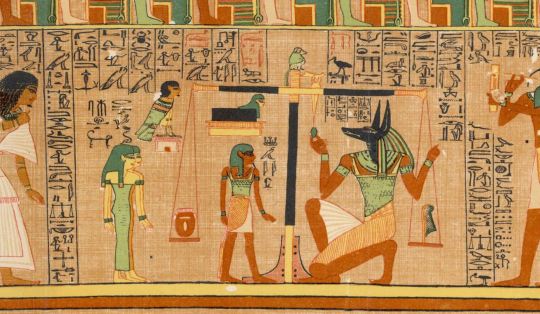
Anubis in the book of the dead (which was not actually a book)
Easily my favorite thing in all of ancient Egyptian mythology, Anubis (known by many other epithets, including but not at all limited to "Lord of the Sacred Land," "He Who is Upon his Sacred Mountain," "Master of Secrets," and "He Who is in the Place of Embalming”) is the god of the dead. He was the protector of graves, guardian of the dead, the shepherd of souls passing into the afterlife, and many more roles, including the ever-important Weighing of the Heart (as seen above), the results of which would dictate whether or not someone was allowed to enter the afterlife - or if their heart was devoured by the monster Ammit and their soul destroyed forever.
Anubis was depicted with the black head of a wolf. His head was colored black because black was the color associated with life, the life-giving soil of the Nile River, regeneration, and embalmed bodies, and he, of course, is also the god of mummification. Anubis is one of the single most important deities in all of ancient Egypt, depicted and mentioned very frequently, even more than most any other deity - however, despite this, there are almost no stories actually involving him.
But no, Anubis was not “evil,” as much of modern pop culture would have you believe! (Sorry The Mummy Returns, I love you to death, I really do - but it was super rude to make Anubis evil.)
Long story short, Anubis was freaking awesome, and there’s way too much to say about him and his awesomeness for just one post. Maybe I’ll do a separate post all about him later, because he’s a personal obsession of mine.
Anubis’s brother (at least, he is considered to be this by some) was the god Wepwawet, another wolf-headed deity. Wepwawet was a man with a white or grey head of a wolf (though some think he may have also had a black head like Anubis, but others claim that is not the cause and the coloring was on purpose as we have seen it in too many different places - still more claim it was just the artist’s preference; it’s hard to know any of these things for sure)...

Wepwawet with Pharaoh Seti I (try not to read that in Ardeth Bay’s voice, I dare you. I don’t know why you wouldn’t want to, though)
Like basically all deities of ancient Egypt, Wepwawet is a complicated god, a deity involved in some funerary rites, but especially associated with war and royalty. Wepwawet means “opener of the ways,” and he was depicted as a man with the head of a grey or white wolf, as well as wolf at the prow of a solar boat, sometimes said to lead armies, to scout, and even to have the honor of going before the pharaoh himself. He is also known by the title “one with sharp arrows more powerful than the gods.”
A very important god, Wepwawet is one of the oldest gods of Egypt ever recorded, and he was always associated directly with royalty and specially the pharaoh. He was said to accompany the pharaoh on his hunts, as well as protecting the pharaoh in life and the afterlife - he is a symbol of divinity of rule and of kings in general. He is, for certain, a very good deity, rather than some kind of evil wolf of Western literature.
And lastly among the prominent wolf-headed deities, we have one of the four sons of Horus, Duamutef...

The four sons of Horus were depicted upon the canopic jars (jars containing certain organs of the mummified dead) starting in the First Intermediate Period of Egyptian history, which was around 2181-2055 BC. Each deity protected a different important organ; Duamutef, the wolf-headed god, always protected the stomach and represented the direction of the east. Please note he was not always depicted with a black head like Anubis; sometimes he also had a white or grey head. It varied. Likewise, in later periods, the forms of these various gods were sometimes mixed up, and a different son of Horus would have the wolf head. These deities were depicted not only on the canopic jars, but also on many other funerary artifacts, including the sarcophagi that would contain the jars.
So we have all these wolf-headed deities... but does any of this tie into werewolves at all?
Well, it doesn’t, really. There seems to be no indication that Anubis, Wepwawet, Duamutef, or anyone else did any particular shapeshifting, and they certainly weren’t cursed. They were gods. Anubis and Wepwawet are both sometimes depicted as simply a wolf as opposed to a wolf-headed man - as many of the Egyptian gods are depicted as their animal counterparts, including Ra, Horus, Hathor, Sobek, and many, many others - but that’s merely his animal aspect counterpart. Depictions and aspects of the gods of ancient Egypt (and also, later, how Rome and Egypt intermingled some of their deities during the Roman occupation, such as Hermanubis) are extremely in-depth topics. I’ve always loved studying them, but they are immensely complicated - certainly far too complicated for this post! So let’s get back to the matter at hand...
I’ll be honest, I have yet to find a credibly-sourced legend that talks about anything like an ancient Egyptian “werewolf.” I’m pretty darn sure they didn’t have anything remotely like what we consider among actual werewolf legends, my friends, and especially none that meet my personal criteria. The ancient Greeks, however, absolutely did, as you probably know if you’ve spent time browsing my werewolf facts masterlist (link at the bottom of this post!).
Wolf-headed gods, however - yes, they definitely had those, and no, they were not “evil gods.” In fact, some of them were very highly revered and associated directly with necessary aspects of life and death, as well as with pharaohs.
Speaking of, if you love ancient Egypt (and also adventure movies), you should absolutely check out my new novella that came out just this past June - Wulfgard: The Tomb of Ankhu!
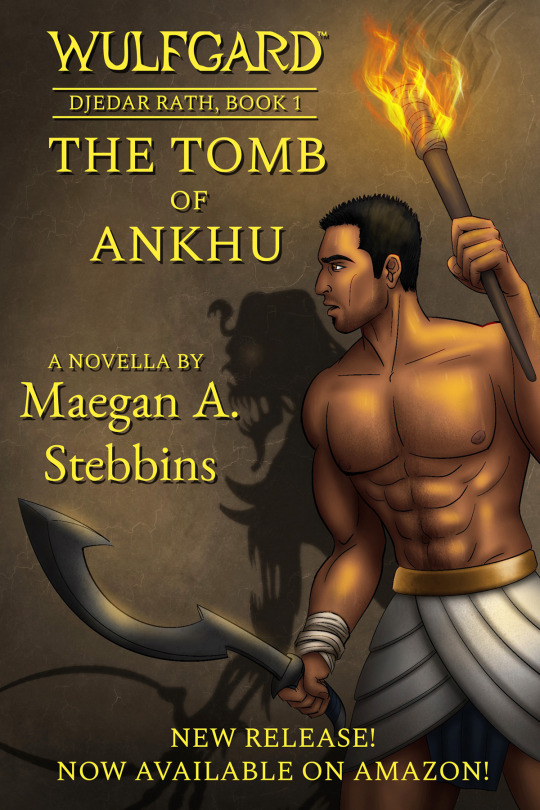
It is the first of two short novellas that tell an exciting tale about adventure, an ancient curse, mummies, memorable characters, and last but not least lots of Anubis and other legends, all of it set in the vast ancient-medieval dark age fantasy realm of Wulfgard: a world where all myths are true.
Every book release means the world to me, and this one is no different. I’m very proud of this story, and I really think you’ll enjoy it.
Deep in the southernmost deserts of Wulfgard lies the resting place of Pharaoh Ankhu the Endless, one of the greatest evils the land of Kemhet, or the world, has ever known. So terrible was his power that the gods themselves cursed him, sealing him away in an underground labyrinth. Ankhu rises with each darkening of the moon, a walking mummy, wandering this tomb in search of his own still-beating heart, without which he can never reach the afterlife.
Over untold ages, Ankhu’s tomb remained undiscovered, a secret protected always by the loyal Medjai, an order sworn to guard Kemhet from all threats. And now, a new threat has arisen: Lord Tefnahkt the Red, a powerful warlock, drives his cult and his many slaves to uncover Pharaoh Ankhu’s resting place and steal the mummy's power.
While a small group of Medjai desperately work to stop Tefnahkt’s plans, one slave may become the key to putting an end to this evil once and for all: Djedar Rath. In a race against time, Djedar must lead the Medjai to prevent Tefnahkt from opening the tomb of Ankhu before the coming of the new moon, when the undead Pharaoh will awaken once more. For, if Ankhu escapes, the world will never survive his wrath.
Inspired heavily by real-world ancient Egyptian and other mythologies - but with many original additions and elements - as well as the classic character-driven adventure genre that mixes aspects of action, thriller, and horror, with a tasteful sprinkling of levity, The Tomb of Ankhu is a tale of non-stop adventure and excitement that will leave you on the edge of your seat! Now available in ebook and paperback!
Go here to purchase on Amazon! https://www.amazon.com/dp/B0C8897R1K
Readers have been really enjoying this one! The second one has been in the works for quite some time already, so expect news about that in the coming months, as well.
Hope you enjoyed the werewolf fact this month, even if it was kind of more a wolf fact. But, myself, I have spent my entire life captivated by ancient Egypt, so I love this kind of stuff.
Thanks for reading, and until next time!
( If you like my werewolf blog, be sure to follow me here and check out my other stuff! Please consider supporting me on Patreon or donating on Ko-fi if you’d like to see me continue my works, including my folklore blog and writing my own novels, werewolf and otherwise. Every little bit helps so much.
Patreon — Personal Website (new and improved! Great starting point!) — Ko-fi — Wulfgard — Werewolf Fact Masterlist — Twitter — Vampire Fact Masterlist )
#werewolf#werewolves#werewolf fact#werewolf wednesday#werewolfwednesday#werewolf facts#folklore#folklore facts#mythology#mythology facts#ancient egypt#egypt#egyptian#ancient egyptian#anubis#wepwawet#wolf gods#wolf mythology#wolves#wolf#legend#legends#ancient world#osiris#ancient egyptian gods#egyptian gods#long post#research#lykos#jackal
86 notes
·
View notes
Text
Mythology Olympics tournament round 1
Propaganda!


Isis was a major goddess in ancient Egyptian religion whose worship spread throughout the Greco-Roman world. Isis was one of the main characters of the Osiris myth, in which she resurrects her slain brother and husband, the divine king Osiris, and produces and protects his heir, Horus. She was believed to help the dead enter the afterlife as she had helped Osiris, and she was considered the divine mother of the pharaoh, who was likened to Horus. Her maternal aid was invoked in healing spells to benefit ordinary people.
In the first millennium BCE, Osiris and Isis became the most widely worshipped Egyptian deities, and Isis absorbed traits from many other goddesses. Rulers in Egypt and its southern neighbor Nubia built temples dedicated primarily to Isis, and her temple at Philae was a religious center for Egyptians and Nubians alike. Her reputed magical power was greater than that of all other gods, and she was said to govern the natural world and wield power over fate itself.
*Dyēus was conceived as a divine personification of the bright sky of the day and the seat of the gods, the *deywṓs. Associated with the vast diurnal sky and with the fertile rains, *Dyēus was often paired with *Dʰéǵʰōm, the Earth Mother, in a relationship of union and contrast.
While its existence is not directly attested by archaeological or written materials, *Dyēus is considered by scholars the most securely reconstructed deity of the Indo-European pantheon, as identical formulas referring to him can be found among the subsequent Indo-European languages and myths of subsequent cultures.
Commentary from the submitter: *Dyḗus ph₂tḗr is a hypothesised prehistoric god - a patriarchal sky god and precursor to figures like Zeus and Tyr - known only from traces in descendent languages/cultures. Everything points to a figure like this having existed, but no direct evidence survives, because he comes from a time before writing was invented. Even his name has to be written with an asterisk to mark it as hypothetical! On one hand, I think it's incredibly cool that we can know that he was (almost certainly) once worshipped, while on the other, I think there's something poetic about a forgotten god around whom the narrative is now defined by our inability to be certain that he ever existed, even in his worshippers' minds and myths.
8 notes
·
View notes
Text
Mythology Inspired Names: Egyptian (fem)
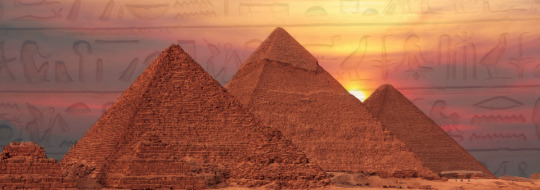
Amunet ~ Egyptian, meaning "the hidden one."
Amunet is an Ancient Egyptian primodial goddess thought to have existed before the beginning of creation. pronunciation: ahh-muh-net
Anat ~ Egyptian, also spelled "Anant," "Anit," "Anthat."
Associated with war and hunting, she is also a goddess of fertility and sexual love. Pharaoh Ramesses II adopted Anat as his personal guardian in battle. pronunciation: ahh-naht
Astarte ~ Egyptian, also spelled "Attar," "Attart."
Largely a love goddess with some war associations, Ashtart was adopted into Egyptian faith but was originally a Seminitic goddess. Her Greek equivalent is Aphrodite. pronunciation: uhh-star-tee
Besna ~ Egyptian, very similar to "Beset."
A goddess of home security. Of safety of the home and within the home. Potentially another name for "Beset," the female version of the god Bes. pronunciation: bes-nah
Hathor ~ Egyptian, meaning "House of Horus."
A major goddess in the Ancient Egyptian faith, Hathor was associated with many things, including the sky, joy, motherhood, queenship, and dance. Literally the Ancient Egyptian concept of femininity. pronunciation: ha-thor, ha-tor
Hemsut ~ Egyptian, also spelled "Hemuset."
Sometimes a single goddess, sometimes a group of goddesses, all defined as the personification of fate. pronunciation: hem-suut
Heret-Kau ~ Egyptian, meaning "she who is above the spirits."
Very little is known of this goddess, but she is known as an attendant to Isis, as well as the guardian of spirits in the afterlife. pronunciation: hair-et-kaou
Ishtar ~ Egyptian, also seen as "Inanna."
A Mesopotamian goddess as well as Egyptian and Assyrian, she is very similar to Astarte but is also affiliated with political power and divine law. pronunciation: ish-tar, iss-tar
Isis ~ Egyptian, meaning "lady of the throne."
An incredibly important goddess in Egyptian mythology, Isis is the wife of Osiris and mother of Horus, and the Ancient Egyptian goddess of magic. pronunciation: I-sis
Kebehut ~ Egyptian, meaning "cooling water," also spelled "Khebhut."
The daughter of Anubis, she helps souls who have died by giving them water as they wait for the mummification process. pronunciation: keb-eh-hut
Ken ~ Egyptian, also seen as "Kiun."
Not much is known of the goddess Ken, other than that she is a goddess of love. This name is not as overtly Egyptian as most on this list. pronunciation: ken
Ma'at ~ Egyptian, meaning "she who is righteous"
The Ancient Egyptian goddess of order, justice, balance, truth, and harmony. Incredibly important and revered in Ancient Egypt. pronunciation: mah-aht, mai-yaht, may-et, muh-at
Mafdet ~ Egyptian, meaning "to leap, to jump"
The goddess of legal justice known for hunting down and killing dangerous creatures who threaten Ma'at, or balance. Often seen with the head of a cheetah. proununciation: Mahf-det
Mehit ~ Egyptian, meaning "north wind," and "guardian"
An originally Nubian goddess associated with the north wind and the protection of holy places. Also a war goddess. pronunciation: me-het
Meret ~ Egyptian, meaning "she who is beloved"
The Ancient Egyptian goddess of music, singing, dancing, and rejoicing. She maintains cosmic order through music. pronunciation: mehr-eht, mehr-iht
Neith ~ Egyptian, also spelled as "neit," "nit," "net."
A goddess of war, weaving, wisdom, and the cosmos, some stories show Neith as the original creator, who created the universe and all it contains, as well as governs it. pronunciation: nee-ith
Nephthys ~ Egyptian, also seen as "Nebet-Hut."
The goddess of water, mourning, night, darkness, protection, magic, health, and beer, Nephthys is often seen with her sister Isis. pronunciation: Neph-th-ihs, neph-th-ees, neph-t-hees
Pakhet ~ Egyptian, meaning "she who tears open."
One of many Egyptian goddesses of war, Pakhet is most likely a regional goddess. She is also known as the protector of motherhood. pronunciation: pah-kh-eht, peh-kh-eht
Perit ~ Egyptian
Perit is a minor Egyptian goddess. One of the many goddesses of the underworld, she is known for her words, which breathe life and strength into Osiris. pronunciation: pehr-iht
Re ~ Egyptian, meaning "sun," and the female version of "Ra."
The Ancient Egyptian god of the sun, Ra is also the father of many other deities. Specifically associated with the midday sun, when light is at its highest, Ra is one of the most important Egyptian deities. pronunciation: rei, ree
Ren ~ Egyptian, meaning "name."
The Ancient Egyptians believed there were many parts that made up the soul, one of which was the "ren," or the true name. The true name was essential to a soul maintaining its identity after death. pronunciation: rehn
Renenet ~ Egyptian, meaning "she who nurses," "she who fosters."
Renenet is the goddess of nourishment and the harvest. She also protects the pharaoh as they journey into the afterlife. pronunciation: rehn-ehn-eht
Satet ~ Egyptian, meaning "she who pours," also spelled as "satit," "satis," "sati," " setis."
Satet was known for protecting the southern border of Egypt as well as being the personification of the annual Nile flooding. Satet also sought to grant the wishes of those looking for love. pronunciation: sah-tiit, sah-teht
Sekhmet ~ Egyptian, meaning "she who is powerful."
Sekhmet is the goddess of war, fire, healing, medicine, and plague. Often seen with the head of a lioness, Sekhmet is closely associated with Ra. pronunciation: sehk-meht, sehk-muht
Serket ~ Egyptian, meaning "scorpion."
The scorpion goddess of healing, magic, and animals. She is known for helping to heal the venomous bites and stings of animals. pronunciation: ser-k-eht
Seshat ~ Egyptian, meaning "female scribe."
Seshat is largely the female personification of knowledge in Ancient Egypt. She is associated with science, writing, math, architecture, astronomy, wisdom, and building. pronunciation: seh-sh-aht
Shai ~ Egyptian, meaning "fate."
The deification and personification of fate in Ancient Egyptian mythology. Shay has been depicted as both male and female. pronunciation: shah-ee, shy, sh-ai
Tawaret ~ Egyptian, meaning "she who is great."
The goddess of fertility, women, childbirth, and the home. Her symbol was often worn by pregnant women, hoping for Tawaret's help as they brought children into the world. pronunciation: tah-war-eht, tau-reht
Tayt ~ Egyptian, meaning "garment."
The Ancient Egyptian goddess of weaving and fabric and textiles. She is also lightly associated with mummification, as she would help to wrap bodies in linens. pronunciation: tah-heet, tah-eet
Tenenet ~ Egyptian, also spelled "Tjenenet."
She is the goddess of protection, childbirth, and beer. Tenenet specifically protected the uterus during pregnancy. pronunciation: twen-ehn-neht, ten-ehn-neht

These name lists are intended to help writers and artists. There is no expectation of credit, and these lists aren't meant to be the end-all be-all lists of possible names. There are millions out there, and this is just for fun!
If you have a suggestion for a name list, or want to see something specific, feel free to submit a request!
And if you see something that is wrong (a pronunciation, a meaning, an origin), again, feel free to let me know!
#writeblr#writing reference#writing resources#writing related#writing research#name list#name suggestions#name ideas#female name ideas#female name list#girl names#girl name list#girl name ideas#ancient egypt#ancient egyptian mythology#ancient egyptian#ancient egyptian influence#ancient egyptian inspired
15 notes
·
View notes
Text

Amanra from Age of Mythology in a Bikini
Amanra, the Nubian warrior queen from the game Age of Mythology, is enjoying the beach along with a nice cool glass of Prostagma wine! Seriously, that lady needs more love in fanart. She might have appeared in the game as a low-poly model, but I bet she’ll be a real hottie if you scaled her up.
#age of mythology#fanart#nubian#kushite#ancient kush#african#black woman#woman of color#dark skin#bipoc#bikini#pinup art#digital art#art
9 notes
·
View notes
Text
Kalabsha Temple – Discover Egypt Monuments
If you're a history enthusiast or simply fascinated by ancient civilizations, then the Kalabsha Temple is an absolute must-visit when exploring Egypt's rich and diverse monuments. Situated on the shores of Lake Nasser, this temple is a true hidden gem just waiting to be discovered. The excitement begins as you approach the temple, marveling at its grandeur and magnificent architecture.

As you step inside, you can't help but be in awe of the intricate carvings and hieroglyphics that adorn the walls. Each detail tells a story of ancient Egyptian mythology and culture, transporting you back in time to a world of pharaohs and gods. It's truly a surreal experience to be in such proximity to these ancient relics, and you can't help but feel a sense of wonder and excitement.

The Kalabsha Temple itself is dedicated to the Nubian god Mandolins , and its construction dates back to the Roman era. Despite its age, the temple has managed to withstand the test of time and remains remarkably well-preserved. Its towering columns and massive statues are a testament to the skill and craftsmanship of ancient Egyptian builders.

Exploring the temple grounds is like embarking on a journey through history. There are numerous chambers and courtyards to wander through, each offering a glimpse into the past. You can almost imagine the rituals and ceremonies that once took place within these walls. It's a humbling experience to be surrounded by such ancient beauty and to be able to witness firsthand the legacy of past civilizations.

Visiting the Kalabsha Temple is not just an opportunity to discover Egypt's monuments, but also a chance to connect with a history that spans thousands of years. It's a chance to learn about the customs, beliefs, and achievements of an ancient civilization that has left an indelible mark on our world. So, if you find yourself in Egypt, make sure to add Kalabsha Temple to your itinerary – it's an adventure you won't want to miss!

Reach out to us:
Emails
WhatsApp: (+20) 1553119249
4 notes
·
View notes
Text
The Muses: Greek Gods and Goddesses

“We are the muses Goddesses of the arts And proclaimers of heroes”
If your house is anything like mine, you probably have quite a few Disney Movies stashed around. Even before we had Munchkin, Mr Moose and I bonded over our love of movies, songs and quoting lines.
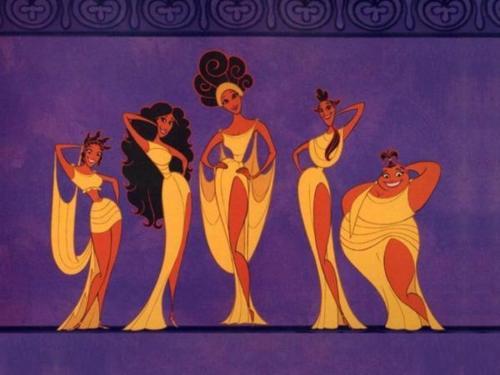
These 5 ladies are sassy, have some really good songs and are so pretty. Currently, as an adult with an appreciation of History, Mythology and Art, I love the Muses even more.

We recently added a 3 year old Nubian doe named Calliope to our group, she goes by Callie for short. She’s sassy, tries to be in charge and definitely fits her name.( In fact, if you’re curious about which Alcohol brand it is. There’s a brand of wines called Calliope Wines based out of Canada, so we didn’t even have to change her name!)
Consequently, I wanted to do some more research on this set of ladies. Who are literally referred to as THE Inspirations of Science, The Arts, Astronomy and more.
History Behind The Muses

The Muses Origin Story(s)
The daughters of Zeus and The Titaness Mnemosyne, goddess of memory, the Muses lived on Mount Olympus entertaining the Gods. Later, they were moved to Mount Parnassus or Mount Helicon depending on who’s research you follow.
However, the other origin story of the Muses is that they are water nymphs who sprung from the four sacred springs on Mount Helicon when Pegasus proceeded to stomp his hooves upon the ground. Most people follow the origin of them being daughters of Zeus.(Which makes the movie Hercules,about their little brother.)
Putting a Face to the Names
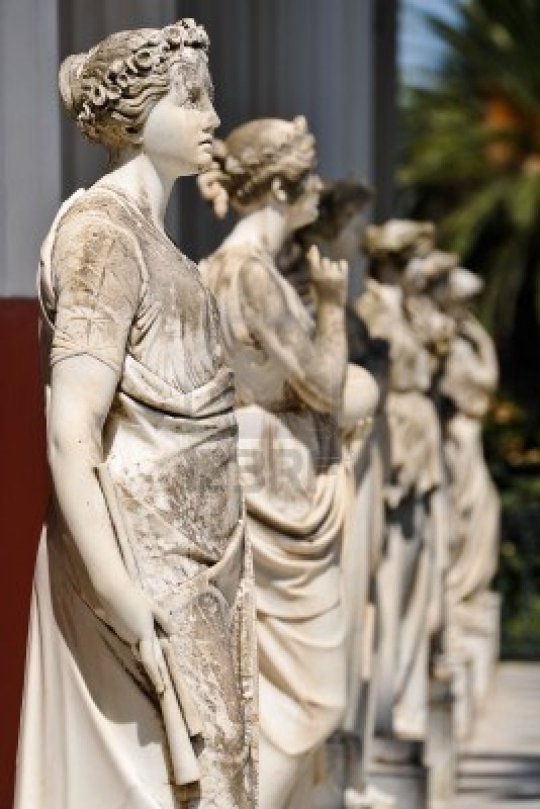
Worshipers of The Muses
Being Goddesses, The Muses had their own following of Worshipers. Scattered all over South and Central Greece, worshipers of The Muses were commonly found at either Mount Helicon in Boeotia and Pieria in Macedonia. Festivals were held frequently all over Greece, full of Poetry Competitions and Dancing and Singing. Pythagoras, the inventor of the Pythagorean Theorem is one of the more famously known followers of the Muses.
Who Are The Muses?
There are 9 Muses total, each with a focus on her area of expertise and inspiration. Some have had children, others have not.
Muse #1-Calliope
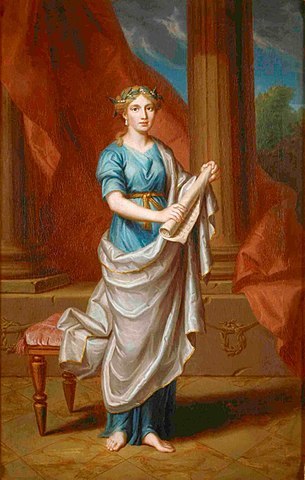
Epic Poetry is a lengthy narrative told in a storytelling manner. In fact, some well known examples include Homer’s The Iliad and The Odyssey as well as Dante Alighieri’s The Divine Comedy. The Muses and their mother are actually mentioned in both of Homer’s works.
Calliope has several sons depending on the lore. The 2 most known are Orpheus and Linus. Orpheus was the great musical hero of Greek mythology, and Linus was the inventor of rhythm and melody.
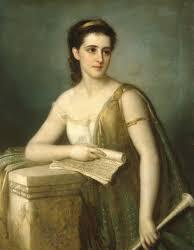
Calliope is known to have been the inspiration for Heroic poems and Rhetoric Arts.
Calliope is physically represented as wearing a gold crown and typically carrying a scroll, book or tablet in her hands.
Muse #2- Clio
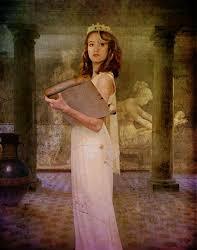
Clio is known as the pro-claimer, glorifier and celebrator of history, great deeds and accomplishments. She is the inspiration and namesake for various modern brands.
Clio has one son, Hyacinth. Story has it; Clio, after reprimanding the goddess Aphrodite for her passionate love for Adonis, was punished by Aphrodite, who made her fall in love with Pierus, king of Macedonia. In spite of that,they bore a son named Hyacinthus, a young man of great beauty who was later killed by his lover, the god Apollo. From his blood sprang a flower (the hyacinth).
Clio is often represented holding an open scroll or sitting by a stack of books.
Muse #3- Erato
Lyric Poetry is poetry expressing personal emotions or feelings, typically spoken in first person. However, lyric poetry is of no relation to the word lyrics when talking about song lyrics.
She is typically represented holding a wreath of myrtle and roses or holding a Kithara(lyre) or a Golden Arrow.( She’s often represented accompanied by Cupid or Eros as well)
Muse #4-Euterpe
She serves as the inspiration for many courses and dialects in language. As well as the inspiration for various instruments.
Muse #5-Melpomene
The inspirations from Melpomene include; tragedy dramas, rhetoric speeches and Melos,the succession of musical tones constituting a melody.
Melpomene is always represented holding a tragedy mask. Other representations can include boots commonly worn by tragedy actors or a knife or sword held in her opposite hand.
Muse #6-Polyhymnia
Sacred Poetry is a collection of works including hymns and other religious texts.
Polyhymnia is the inspiration for Divine Hymns, Mimic Art, Geometry and Grammar.
Her representation is a serious expression, a finger held to her lips in silence and a long cloak or veil.
Muse #7-Terpsichore
She is the inspirations for Dance, the Harp and Education as a whole.
Terpsichore is the other Muse known as Mother of Sirens. One of the most known Sirens, Parthenope, cast herself into the sea after her songs failed to ensnare Odysseus.
Muse #8-Thalia
Idyllic Poetry or Idyll Poems,are typically a short poem, descriptive of rustic life.
Thalia is known as being the inspiration for Comedy Drama, Geometry, Architectural Science and Agriculture.
Muse #9- Urania
She is associated with universal love and astronomical writings. It was said Urania could tell the future by the arrangement of the stars.
Urania is said to have inherited her majesty and power from her father Zeus, and her beauty and grace from her mother.
The “10th” Muse
Little is known about her history and many of her works have been lost to time. There are several theories that she is the inspiration for the word Lesbian and other LGBTQ+ phrases. One of her only completed works that can be found is a poem titled “Ode to Aphrodite”.
The Muses’ Purpose
The Muses were created to help the People and the Gods to forget their troubles and suffering through art, music and poetry. In fact, these 9 women were very close to each other and, subsequently, still serve as inspiration for many of the Arts today.
Mentions of the Muses in Popular Culture
In contrast to Homer and Dante’s works, the Muses are mentioned in a number of modern cultures as well.
My favorites include the Disney movie “Hercules” where the Muses are the musical narrators throughout the movie. My other favorite is the Book series Xanth by Piers Anthony. In Xanth, the Muses live on Mount Parnassus and are one of several residents visited to be asked questions pertaining to their( the visitor’s) quests.
Other examples include:
Rick Riordan’s mythical series: Percy Jackson and the Olympians, Heroes of Olympus and The Trials of Apollo.
South Korean all-female idol group debuted under the name ‘Nine Muses’
The show Charmed, an episode features The Charmed Ones who must protect the Muses from a warlock who is trapping them into a magical ring.
The Muse Calliope is a character in the graphic novel Sandman, by Neil Gaiman.
There are tons of other pop culture references to the Muses, from Animes, Comics, Musical, Movies and Books.
Who Inspires You?
In a word, the Muses are an Inspiration, not only in Ancient Greece but also in the modern realm as well. Who is your favorite Muse? Will you be calling on a Muse next time you need inspiration?
7 notes
·
View notes
Note
https://youtube.com/shorts/aZ6fiBbRfeQ?feature=share
Theitsa they are doing it again! Now they depict Andromeda as black African princess and people again in the comments are trying to debate it and make it again about color instead of ethnicity...😅
Literally no one is even questioning how problematic and rude it is to take a character from GREEK mythology and erasing it from it's ethnicity.
oooooof.......
Disclaimers:
>> No skintone is superior or "better" than others. This blog doesn't stand for that
>> Greek culture has space for all people
>> It would be equally inaccurate to present Andromeda with the appearance of a North European, like blue eyes and blonde
To the video:
>> The video misrepresented the location of Aethiopia (Andromeda was middle eastern, not South African! Andromeda is the mother of Persians, according to our mythology, who are... Asian!)
>> The video disregards all ancient Greek texts and depictions of Andromeda. I don't know how to say this but.... if you are speaking about myths from another culture, better respect the texts and the depictions of the culture. Regarding Greek culture, it is a cultural convention to follow our depictions.
>> The video creators probably based her depiction off Ovid's description which was 1) the only one of its kind saying Andromeda had dark skin 2) Racist af the way he wrote it 3) Ovid is a hack and misrepresented Greek myths a lot (people seriously discourage having Ovid as a source. He pulled many things out of his ass and ignored the actual Greek myths)
>> The channel that produced the video is Afrocentric in the negative sense of the word. The viewers themselves write blanket statements that are historically inaccurate, like "people forgot that all Egyptian dynasties were black except for the last dynasty which is the Ptelomaic dynasty", "The original Greeks are the Estruscians and Minoans who are Nubian Cushites" and "Greek mythology is full of Black people and they want to erase us from it", "The Greeks and black Africa were tight. They clearly got along without racism. They lived during a time when Africans were highly respected while Europeans ( other than Greeks) were feared and rejected as barbarians. Greek and Roman descriptions of other Europeans were frightening. Their descriptions of black Africans were filled with awe and respect."
I would be extremely happy if these statements were factually true - if our people had very close ties with African nations, if ancient Greeks spoke highly of Africans and didn't represent them stereotypically, etc - but it's not supported by archaeological evidence. To ignore the evidence is to spit to the effort and intelligence of generations of Greeks and xenoi who have gathered and continue to gather this evidence.
Let's not stand a lot to the more voyeuristic and fetishizing comments about "Black"* women. They speak for themselves. But may I stand on a while on other comments that reek of conspiracy theorist logic... "it's sad how blind people can be to Truth." and "That's why the jealousy to destroy and re-educate is so great. The Envy of the ancestors", "No wonder I was obsessed with so called Greek mythology because it’s our people not theirs."
Bro
ΜΠΡΟ
ΜΠΡΟΟΟ
Stop calling all historians and archaeologists worldwide hacks! Please, for the love of whatever you hold dear. They've been trying to uncover as much as they can! Greeks, Egyptians, and all sorts of people with all sorts of appearances are in this domain! It's not to their advantage to hide anything! Not worldwide! Not even in the US, to be honest. (The research there is exhaustive too, and biases don't stay covered for long)
The results not fitting your ideal image doesn't mean they are fake. Do I really need to explain how much, constant work archaeologists do, and how most of them strive to reach the truth as much as possible?? If there were depictions of Andromed as "Black"* and ancient Greek texts that supported it, and people were hiding them or destroying them, yes, then I would agree that something bad was going on. But that's just not the case!
Systemic oppression, racism, and biases in scientific domains are very real, don't get me wrong. But Andromeda's depiction has little to do with it. We have overwhelming archaeological evidence of how she looked, and it would be wrong to ignore them. Not only out of respect for the culture one is entertained by, but also because that's the objective reality.
Here you can find a huge detailed, exhaustive essay about the appearance and ethnicity of Andromeda, with sources and depictions. It is more empowering to have your facts straight than to believe appealing falsehoods.
* In quotation marks cause it's a slur in my language
19 notes
·
View notes